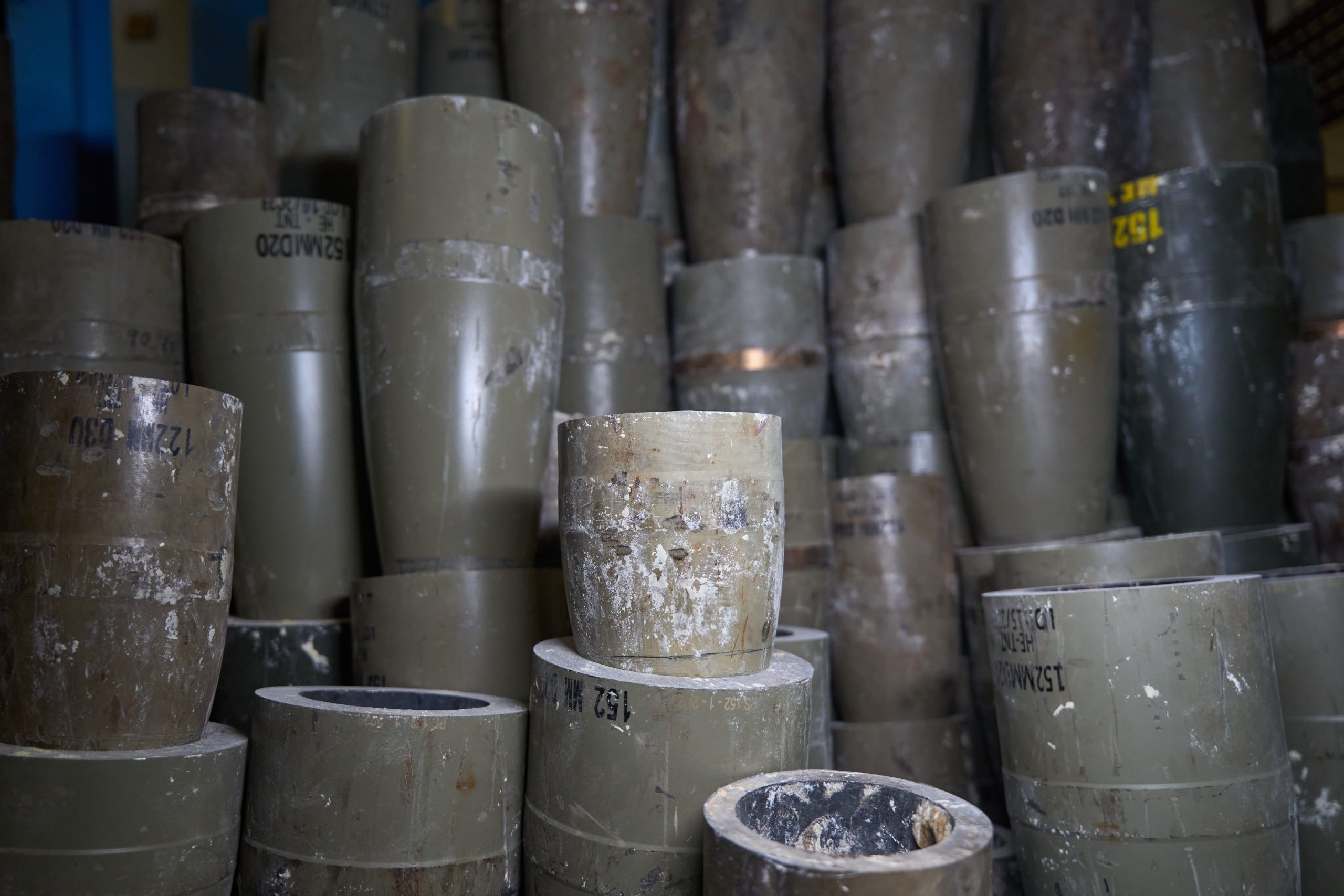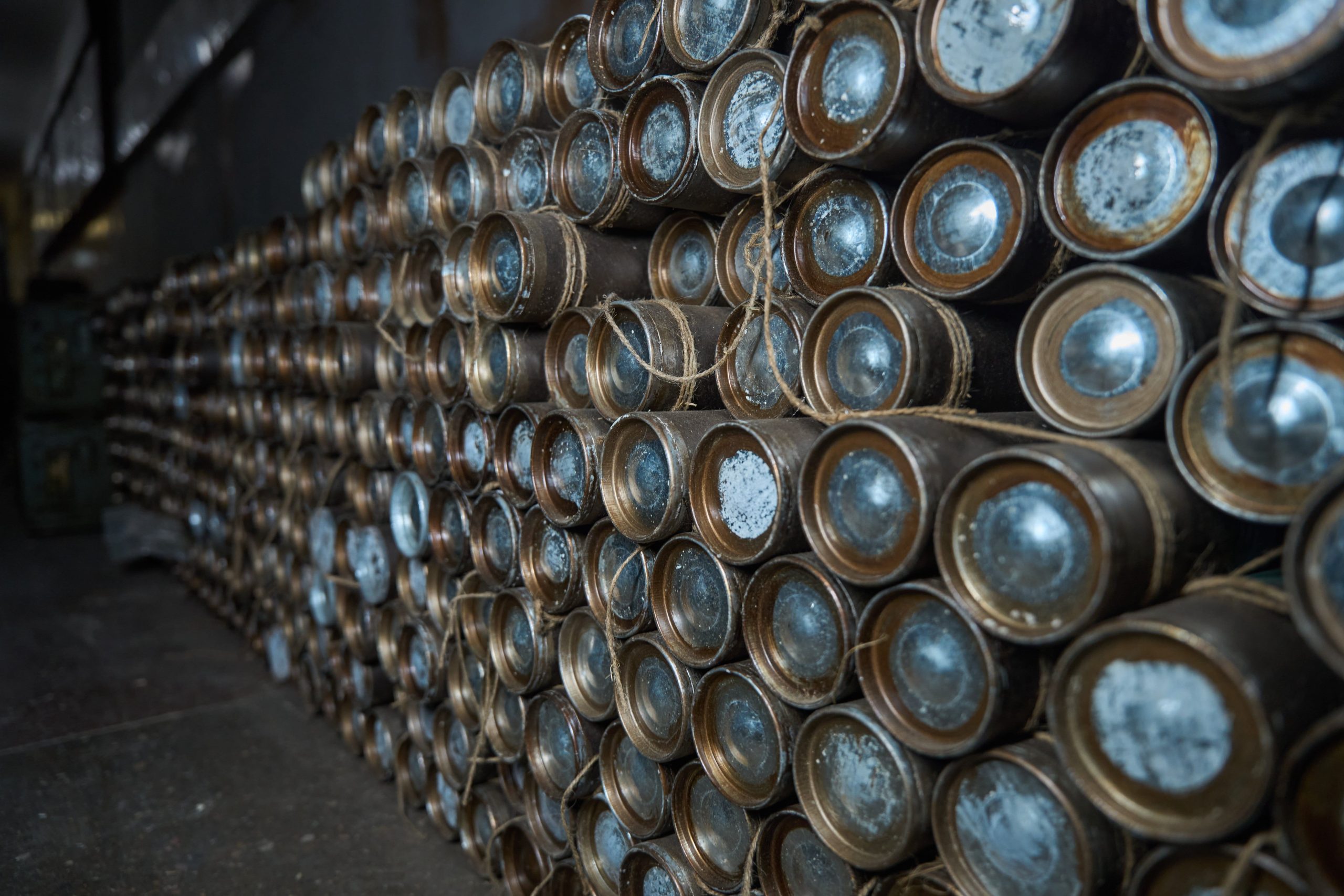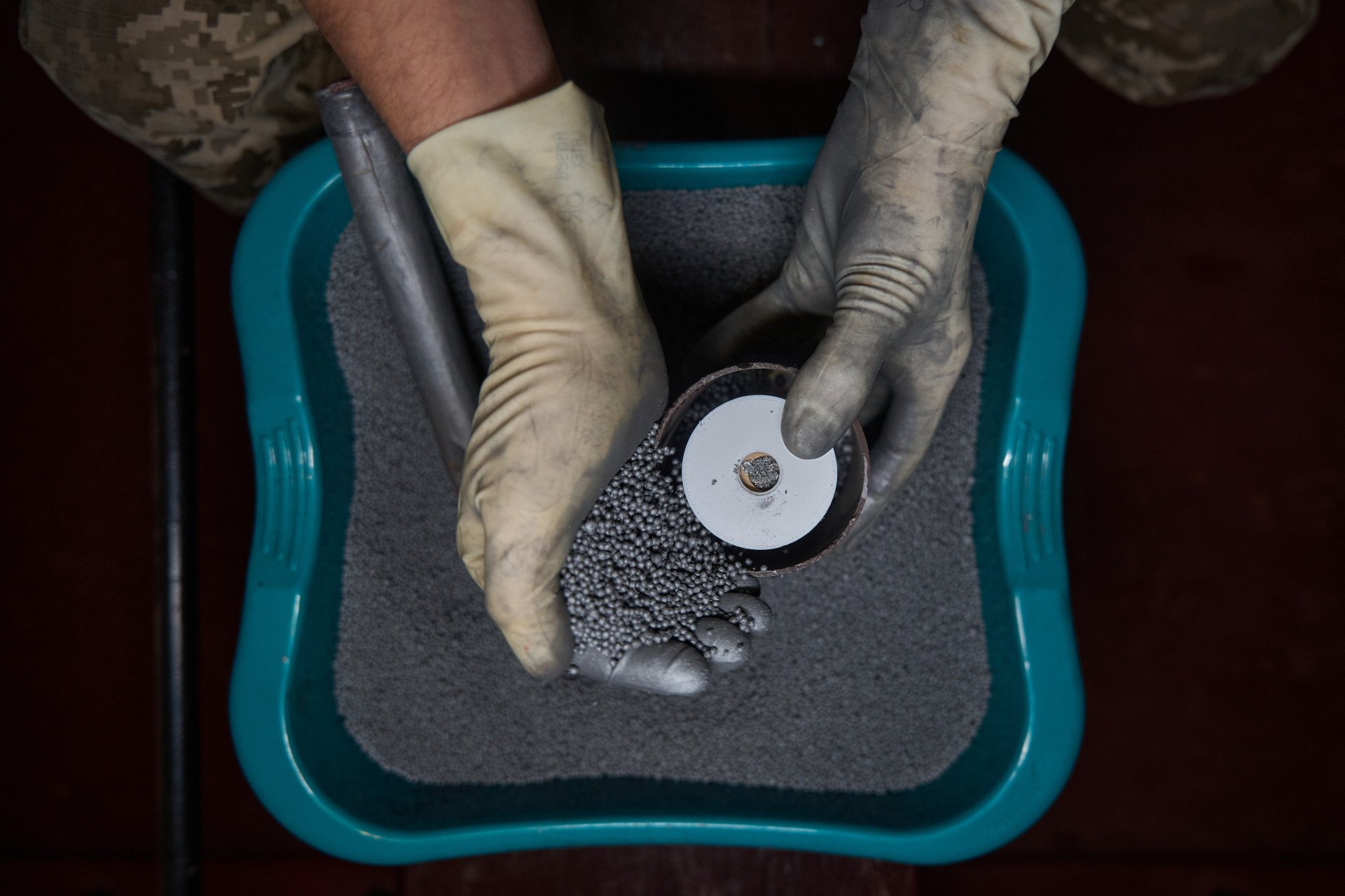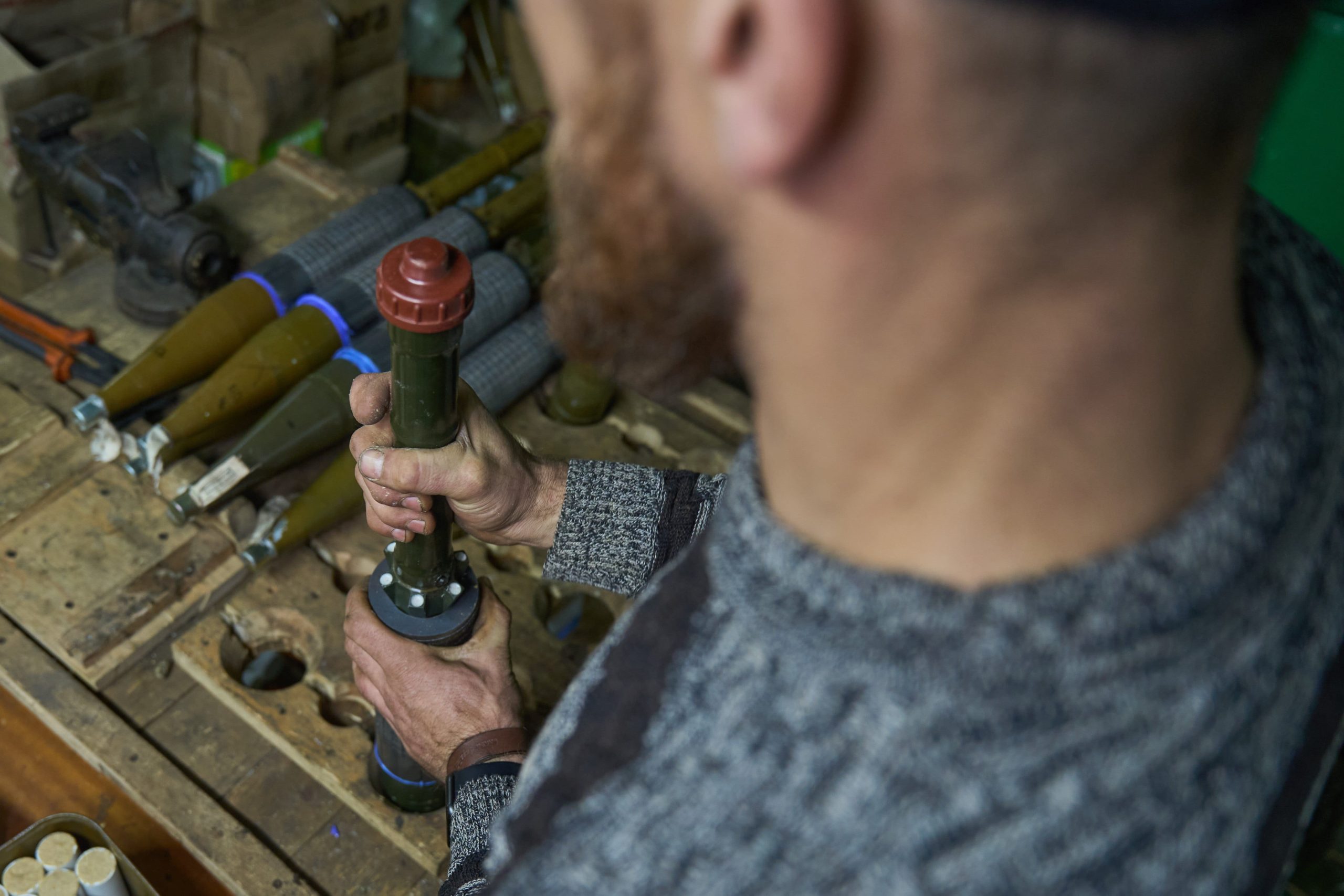From shell to Javelin: what drone ammunition is made of
8 January, 2025 Hulls of recycled 122mm and 152mm artillery shells. Photo credits: United24 The Ukrainian military-run workshop recycles dozens of defective shells daily, turning them into ammunition for FPV drones and bombers.
United24 journalists visited a frontline workshop that provides explosives to attack drone crews a few kilometers from the front. "The range of ammunition we receive is huge," Ivanych, founder of the workshop and commander of the 3rd Regiment of the Special Operations Forces, shared. With limited resources, he and his team recycle old, unusable artillery shells, some dating back to the 1950s.
Soldiers from the frontline are also sending in Javelin and NLAW anti-tank missiles that have been damaged by debris but still contain explosives. It is used to fill the warheads of Ukrainian drones.
Photos from the facility show tubes of ammunition being prepared for disposal, as well as cut artillery shells that have already been stripped of explosives. The distinctive markings on the tubes identify them as Iranian and Pakistani 122/152-mm ammunition. A cutaway of one of the shells shows that it had been corroded for a long time and could hardly be used for its intended purpose.
Because such ammunition is filled with phlegmatized explosives, it will not explode without a special fuse.
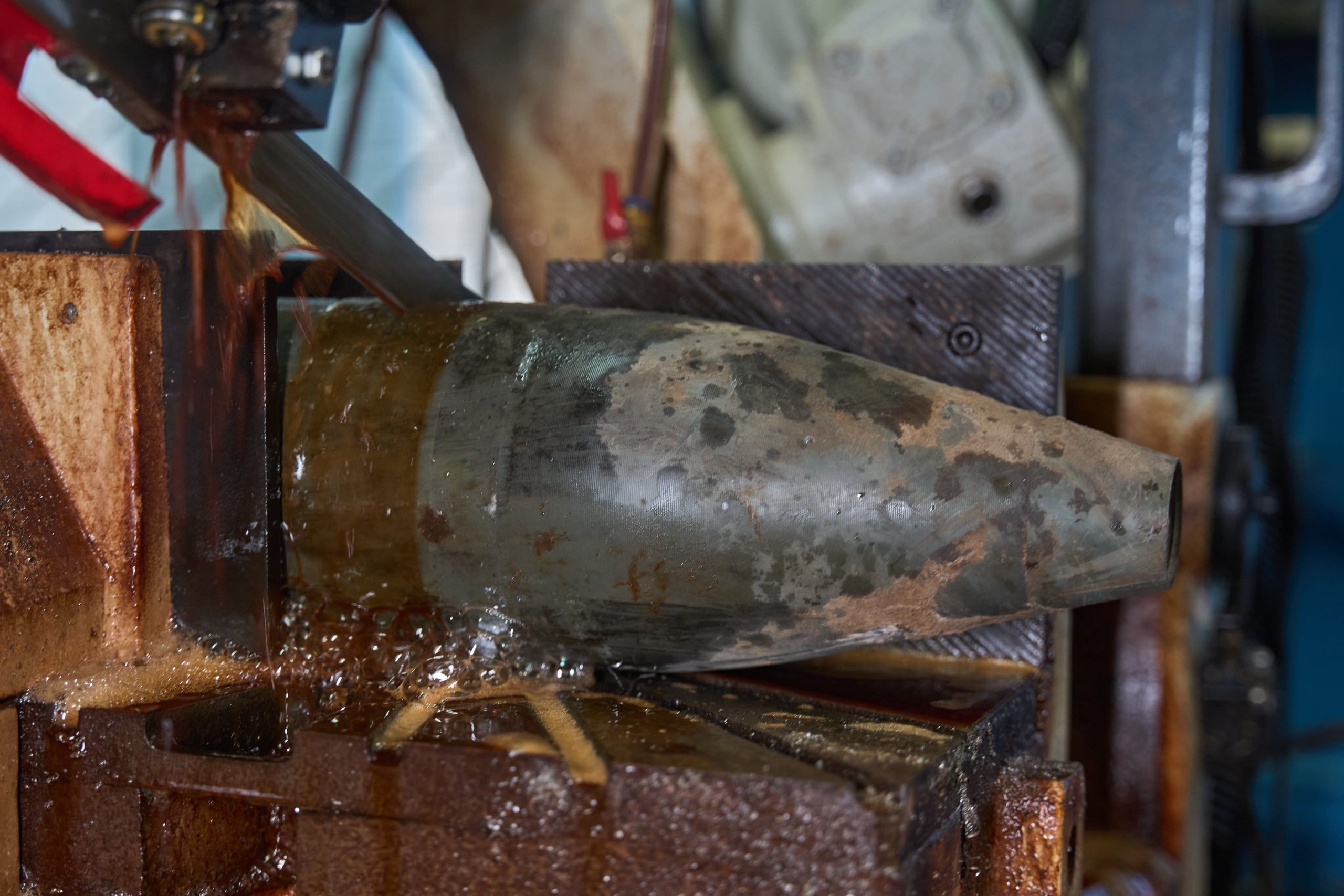 Cutting up an artillery shell to remove explosives. Photo credits: United24
Cutting up an artillery shell to remove explosives. Photo credits: United24
New life for old ammunition
In the center of the workshop is a conveyor line for the production of drone warheads, where nearly fifty military personnel work. Each group has a different task: one group cuts metal rods into monotonous elements that will become fragments.
Another one loads shrapnel into the 3D-printed bodies of combat units for FPV drones. The third group fills these cases with explosives. The plant also repurposes PG-7 grenades for the RPG-7 grenade launcher, adding counterweights and feathers to them so that they can be dropped from bombing drones.
Some grenades have an additional rim of "fragmentation jacket" so that when detonated, the anti-tank projectile can also hit enemy infantry. "Everything you know, and even things you don't, can be turned into a weapon. You just have to be creative," Ivanych says.
Last October, the Cabinet of Ministers authorized the removal of explosives and other elements from unexploded ordnance for use by the Ukrainian Defense Forces, thus legalizing a long-existing "industry." "According to rough estimates, up to 20% of ammunition in the combat zone does not work.
That is why we have developed a mechanism that will help not only dispose of dangerous items but also turn this process into a benefit for our troops," said Defense Minister Rustem Umerov.
First of all, it is about explosives, which are currently in short supply in the Ukrainian defense industry and global arms manufacturers.
